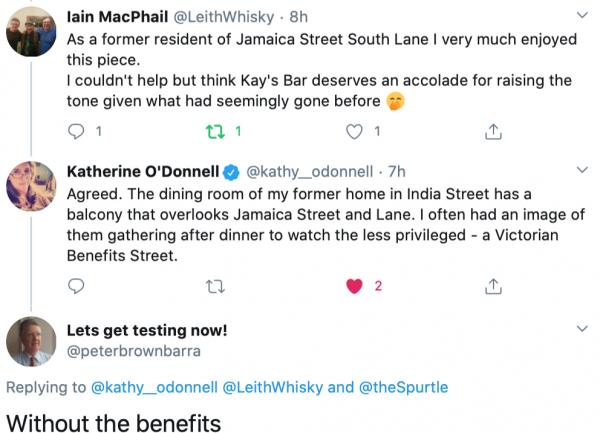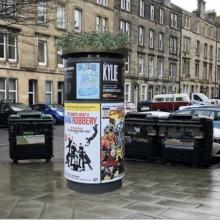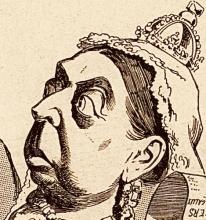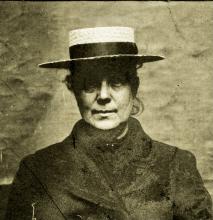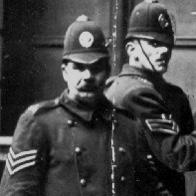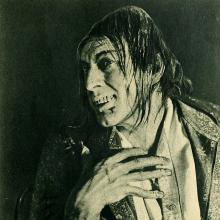
Introduction
Ever since the publication in 1886 of Robert Louis Stevenson’s Strange Case of Dr Jekyll and Mr Hyde, we have been accustomed to thinking of Edinburgh as a city divided. Its clefts are notionally between outward respectability and private vice, between modern Enlightenment and historic superstition, cerebral advancement and bestial instinct.
Edinburgh’s dualisms are expressed, we are told, in the contrasts between the Georgian New Town’s wide, well-ventilated streets, crescents, squares and circuses, and the premodern Old Town’s narrow, pox-infested closes, pends, and wynds.
So attractive and familiar are these binary distinctions that today even the capital’s street lighting reflects them. Cool, white light is favoured for the wealthier geometries to the north; warm white light for the more ramshackle south.
Granulated horridness
But how accurate a reflection of Edinburgh’s true character is this easy shorthand of the soul? James Craig’s 1766 masterplan for the New Town might have been based on rational parallelograms, but it was financed in no small part by the profits of the slave trade.
How gratifyingly appropriate, then, that while Heriot Row (where R.L.S. was raised at No. 17) rose to represent the lofty grandeur of middle-class respectability, beneath its windows to the rear stewed the infamously filthy and uproarious Jamaica Street and Jamaica Street Lane—awash with effluent, home to shebeens, houses of ill-repute, small industries pouring out smoke and smell and noise.
Here was poverty, depravity, and disease, unmistakeable and within sight of the great and the good in their bedrooms above. Here in the back streets was an adjacent narrative that challenged the supposedly self-evident moral certainties of Edinburgh’s psycho-geography. Eminent judges and engineers complained in vain to the Police authorities.
News from the Mews searches for other such fine-grained New Town paradoxes and surprises, using newspaper reports of the day to examine the less acknowledged side of Edinburgh’s northern back-streets and mews lanes.
Its compass is admittedly arbitrary, but for convenience covers a period easily understood as Victorian (1837–1901), and a geographical boundary matching that of today’s UNESCO World Heritage site. It ignores the New Town’s thoroughfares and palace frontages, and looks instead at the secondary service lanes behind: the cul-de-sacs and dead-ends, the speculative developments that failed and fell into slum uses.
What soon emerges is that life—in all its glorious, comical, disorderly, depressing, vile and frequently violent manifestations—teemed across the New Town in a way that Victorian photographs of immobile rectitude fail to capture.
The problem with journalism
Journalism, then as now, was not a faithful lens. It distorted the reality it professed to record. It tended to focus more on the remarkable than the humdrum; the shocking, salacious, and cruel more than the kind, loving, and humorous. Similar charges may be laid against my choice of articles to transcribe. But even taking into account such biases, one cannot help being struck by how utterly dreadful and degraded were the lives of so many in the back-streets of the Victorian New Town.
In defence, I’d say that, if anything, I have tended to downplay such mundane horrors by excluding most of the hundreds of accounts detailing abuse of women, children, and animals. My reason is that inclusion of them all would either have nauseated the reader, or—perhaps worse—diminished their effect through repetition. For the most part, what you’ll find here instead is a representative cross-section; only for Gilchrist Lane did I decide to include every instance of beastliness.
As well as items of lurid fascination, this compiler has also been attracted to stories which parallel Edinburgh concerns today. Hence, you will find here not only crime stories, but ones about potholes and tramways, delinquent youths, the struggle for running water, iniquitous Planning, a citywide overprovision of alcohol, and the occasionally woeful inadequacies of local-authority street cleansing and waste collection.
It’s worth noting that not every New Town back-street features within these pages. Some appeared in the newspapers not even once during Victoria’s long reign, others only fleetingly as passing details, yet others only in the lists which chronicle the orderly progression of civilised bureaucracy. Here, then, Edinburgh life continued blameless and banal, or with just enough canniness to avoid the attention of the Press.
Ghastly but interesting
I have tried to let the original reportage speak for itself, sometimes choosing items for the period charm of their prose as much as for the interest of their subject matter. I regret that this website is incapable of reproducing the quirks of 19th-century newspaper typography, which add a great deal to the interest and character of the stories as originally printed.
In what follows, notes are used sparingly to inform and clarify, and occasionally to add illuminating sidelights just for the fun of it. In this, I have found Stuart Harris’s The Placenames of Edinburgh (Gordon Wright Publishing, 1996) particularly helpful, and also the National Archives’ online currency converter, the National Library of Scotland’s online Town Plans, and the astonishingly rich British Newspaper Archive.
I wish you joy in discovering these stories of bygone Edinburgh, a city that is simultaneously ghastly and delightful, odd and familiar to the modern eye. The first batch will appear tomorrow.—AM
[Image top-right: Wikimedia, creative commons.]
---------
